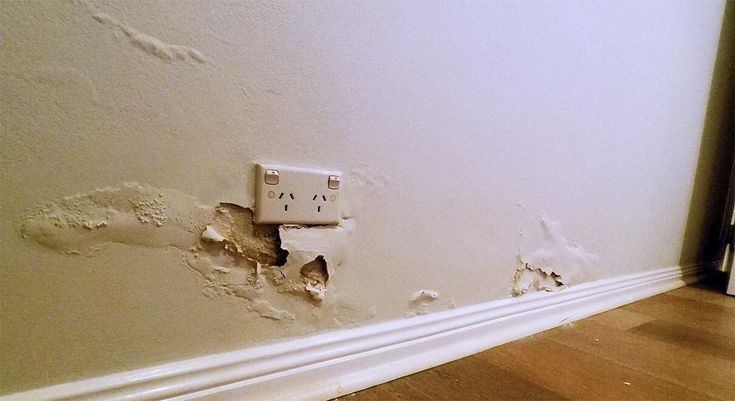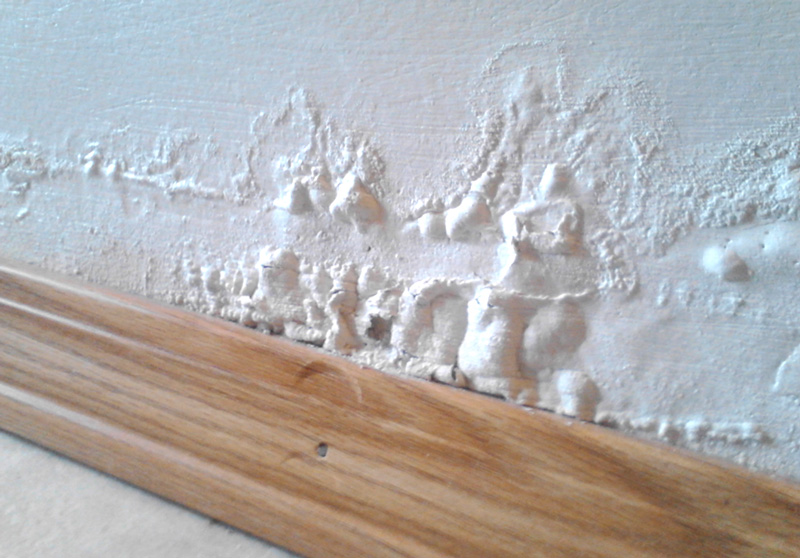______
What are the causes of rising dampness?
Rising dampness is a common problem in buildings, and it occurs when groundwater or moisture from the soil is absorbed into the walls and floors of a building. Some of the causes of rising dampness include:
Absence or failure of a damp proof course (DPC): DPC is a layer of waterproof material installed at the base of a wall to prevent moisture from rising into the wall. If the DPC is missing, damaged, or poorly installed, moisture can rise into the wall and cause rising damp.
Bridging of DPC: When there is an interruption in the continuity of the DPC, such as a bridging caused by the presence of mortar droppings, rubble, or debris in the wall, it can allow moisture to rise through capillary action.
Porous building materials: If the walls of a building are made of porous materials such as bricks, stones, or mortar, they can absorb moisture from the soil and cause rising dampness.
High ground levels: If the ground level around the building is higher than the DPC level, moisture can bypass the DPC and penetrate the walls.
Poor ventilation: If the building has poor ventilation, it can lead to high levels of humidity and condensation, which can cause rising dampness.
Plumbing leaks: Leaks in plumbing pipes and fixtures, such as sinks, toilets, and showers, can cause moisture to accumulate in the walls and floors and lead to rising dampness.
It’s essential to identify the root cause of rising dampness and address it promptly to prevent further damage to the building’s structure and the health of its occupants.
EMERGENCIAS
604 98 00 12
HORARIO
9:00am – 6:00pm
PRESUPUESTO GRATUITO
Obtenga su presupuesto personalizado

Envíe fotos de cualquier daño que tenga en sus paredes
______
6 Key rising Damp Signs
Discolored or stained walls: Rising damp can cause walls to become discolored or stained, particularly in areas where moisture is accumulating. This can result in yellow, brown, or dark patches on the walls.
Peeling or bubbling paint or wallpaper: As moisture penetrates the walls, it can cause paint or wallpaper to peel or bubble, particularly in areas close to the ground.
Peeling or bubbling paint or wallpaper: As moisture penetrates the walls, it can cause paint or wallpaper to peel or bubble, particularly in areas close to the ground.
White powdery residue: Rising damp can cause a white powdery residue, known as efflorescence, to appear on walls. This is caused by salts in the moisture that evaporate and leave a crystalline deposit.
Rotting skirting boards or floorboards: As moisture accumulates in the floors, it can cause skirting boards or floorboards to rot and deteriorate.
Cold or damp sensation: Rising dampness can make walls and floors feel cold or damp to the touch, particularly in colder climates.


______
Why You Shouldn’t Ignore Rising Damp?
Rising damp is a common problem that can occur in buildings constructed with brick, stone or other porous materials. It is caused by groundwater rising through walls and floors, and if left untreated, it can cause severe damage to your property and pose a significant threat to your health and safety. There are some reasons why you shouldn’t ignore rising damp:
Structural damage: One of the most significant consequences of ignoring rising dampness is the damage it can cause to the structure of your building. Rising dampness accumulates in and throughout your walls, it rots skirting boards and removes paint. This damage only worsens over time, leading to costly repair services.
Health risks: Damp environments are the perfect breeding ground for mold, which can cause a range of health problems, particularly for those allergic to it. It can lead to respiratory issues, skin irritation, and other health complications. The longer you ignore rising dampness, the more significant the health risks become, as mold spores can spread throughout the property.
High energy bills: Rising dampness often results in cold walls and floors, leading to a need for higher heating temperatures and more frequent use of heating systems. This, in turn, leads to high energy bills and puts your heating appliances under additional stress, shortening their lifespan and necessitating replacement earlier than expected.
Safety concerns: Rising dampness can cause structural damage to your property, compromising its stability and putting occupants at risk of injury. The rotting or crumbling of structures may no longer provide the support they were designed for, leading to serious safety concerns.

